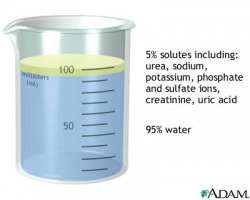The Urinary System
Functions:
- Removes toxic waste from the body through a filteration system
- Regulates the concentration of chemicals within the bloodstream
- Removes toxic waste from the body through a filteration system
- Regulates the concentration of chemicals within the bloodstream
Kidneys
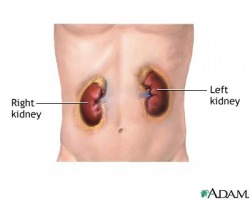
The kidneys are the main organs of the urinary system. Humans have two of them, although it is possible to live with only one, which makes kidney transplants a potential way to save a life. Kidneys are dark, and bean-shaped. The outside of the kidney is called teh renal cortex. The inside is called the renal medulla. Within a kidney, thousands of blood vessels allow blood to enter the kidney to be filtered. This requires about one million microscopic tubes called nephrons. Nephrons help eliminate waste in the form of urea, detoxify poisons, synthesize glucose and maintain a balance for electrolytes, acids and bases, blood pressure and red blood cells. Waste passes through the nephrons and into the renal tubules as it prepares itself to leave the body.
Ureters
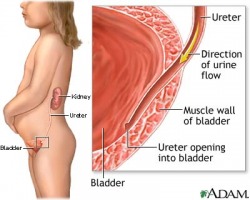
Ureters are two narrow tubes connecting each kidney to the bladder. Smooth muscle in the ureters contract and relax to push urine downwards. Approximately every ten to fifteen seconds, urine passes through the ureters and enters the bladder.
Bladder
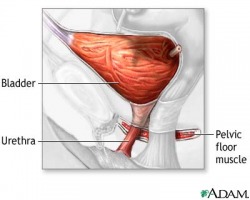
The bladder is a hollow organ located in the lower abdomen. Similar to the pyloric and cardiac sphincters of the stomach, circular muscles tightly close the bladder so that urine cannot leak out. Muscles in the bladder's walls relax and expand as urine is being collected. Nerves in the bladder lets a person know when it is time to urinate, so they may find a bathroom and allow the bladder's walls to contract and the sphincter muscles to relax, thereby pushing urine out.
Urethra
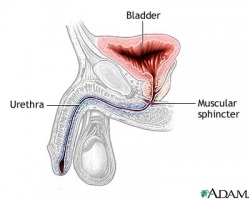
Finally, the urethra is a tube that allow urine to leave the body. Healthy urine is an aqueous material that is 95% water and 5% metabolic waste. Metabolic waste formed from carbohydrates and fats is water and carbon dioxide; waste from metabolizing proteins and nucleic acids is known as nitrogenous waste, a highly toxic substance. About 50% of nitrogenous waste is urea, formed by when proteins break down into amino acids and may produce ammonia. The liver converts this ammonia into urea. Other nitrogenous wastes include uric acid and creatinine.
Images from: http://medlineplus.gov/
